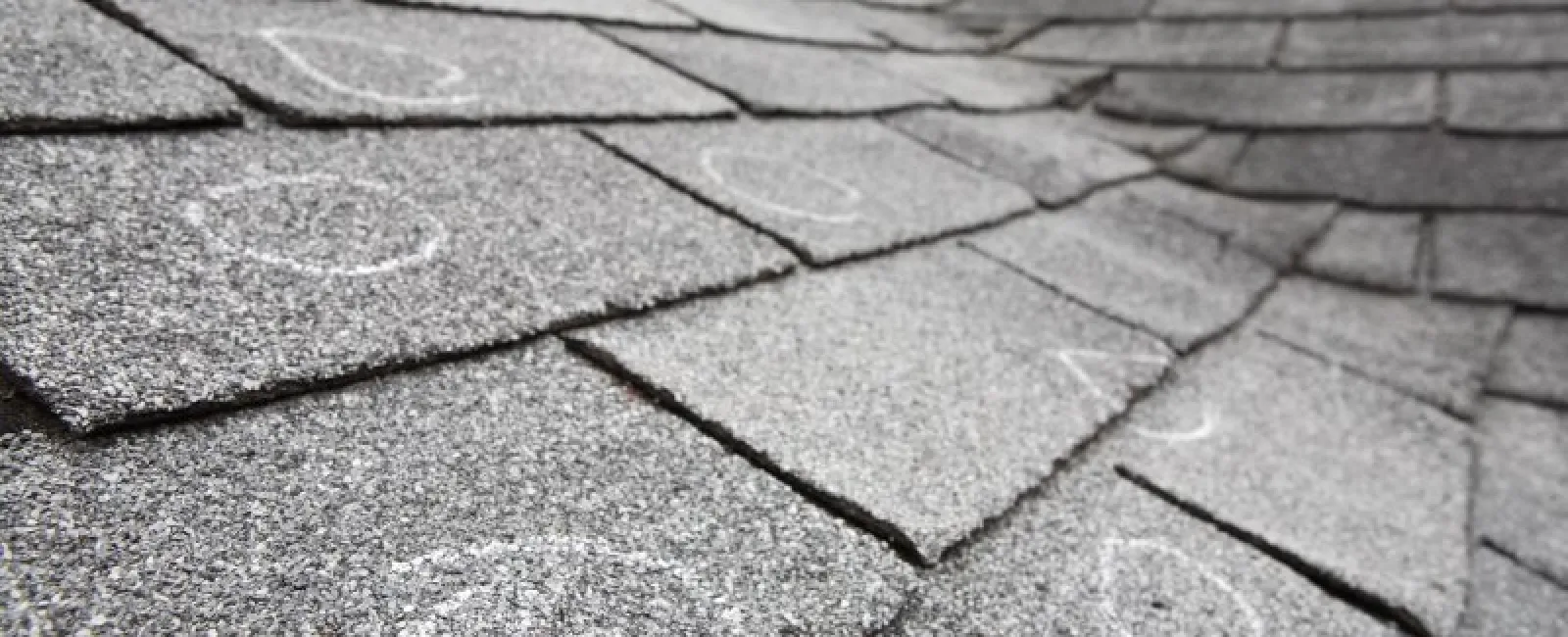Unfortunately, roof damage is not something you
can prevent when it comes to hail. However, you can learn how to identify it
and what to do when you find it.
Sometimes, after a hailstorm, it can be obvious where the repairs
are needed, but knowing what to look for in order to assess the impact of any
roof storm damage can be helpful.
Signs of Hail-Related Roof Damage
The effects
of hail storm damage on a roof can depend on many different factors, including
the size of the hail, the age of the roof, and the roofing material used.
Determining the specific types of damage will help you know if the repairs
needed will be cosmetic or more extensive. Following are 10 common
indicators of a hail-damaged roof:
1. Granules coming loose. If you
are inspecting a hail-damaged roof closely, you may find that
the granules on the surface of the shingles are coming loose or missing. While
this may seem small, the quality of the shingle has been compromised and small
impacts such as this can cause leaks. These are details to note and take
pictures of when filing an insurance claim and quoting contractors about
repairs.
2. Black colored dots. Colored
dents or dots are a common indicator of hail damage to shingles.
These are important to replace to prevent water from pooling on the roof.
3. Split shingles. Split,
cracked, or raised shingles suffering hail damage will lead to massive water
damage.
4. Impact marks or dents. A common
identifier of hail damage to shingles is what seemingly looks
like random dents or dings. If these marks look as though they appear in no
similar pattern, it is most likely a hail-damaged roof.
5. Cracks in the shingles. After a
severe storm, the high winds and hard hail impacts can cause the shingles to
crack. This issue is more obvious to spot however, it is important to note that
a cracked shingle on a hail-damaged roof will not be able to
sufficiently protect your house from the weather, as it exposes tears leaving
the roof with bare spots.
6. Bruised shingles. As a common
sign of hail damage, bruised shingles can often be identified by touch. You
will know a shingle is bruised if it feels soft. To determine, press down
gently and see if there is any give. This is a key indicator that the shingle
has started to deteriorate.
7. Missing or loose shingles. Of course, if
there are obvious shingles that have blown off during a storm this would be a
strong indicator of major hail damage. Look for any shingles that are easily
pulled off or flapping in the wind and about to break off.
8. Weakened self-seal strip. During a
storm, the high winds and hail can cause the seal of a shingle to weaken, which
is what leads to it blowing off the roof. Although shingles may still be
intact, without a strong self-seal strip the integrity of the shingles will be
compromised. This can lead to exposed elements or cause other shingles to tear.
Contacting a roofing professional to assess the impacts will increase the
likelihood of identifying these subtle but significant damaged areas.
9. Exposed or fractured fiberglass
mat. Hail
damage to shingles will cause the fiberglass mat underneath to break
away and shatter the surfacing. Any exposed underlying roof material can be a strong
indicator of hail damage.
10. Damage to gutters, siding, and
air conditioners. Sometimes, you’ll be able to tell that your roof has suffered hail
damage without ever stepping foot on the surface. Dents in the gutters or downspouts, dents or dings on siding or windowsills, and
damage to air conditioners or other outdoor areas with apparent hail damage can
give you a pretty good idea that roof damage exists, too.
Repairing Roof Storm Damage
Not all shingle damage will require a full roof replacement. But
when addressing hail damage, roof repair will protect the
integrity of both your roof and home, preventing small impacts from turning
into expensive problems. Some of the key indicators of hail damage can only be
found with a trained professional who will assess the roof and provide insights
into what specific repairs are needed.
If you are looking for a trusted company to help you determine
whether your roof has suffered hail damage, get
in touch with the Findlay Roofing team today. While we can’t prevent
severe weather from impacting your roof, we’re there to help when it does.



